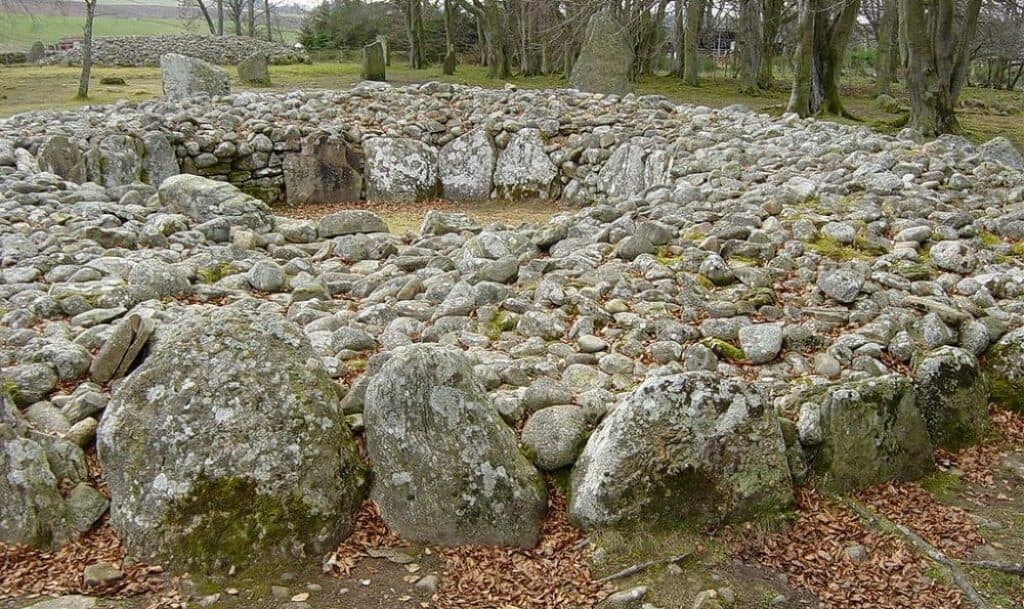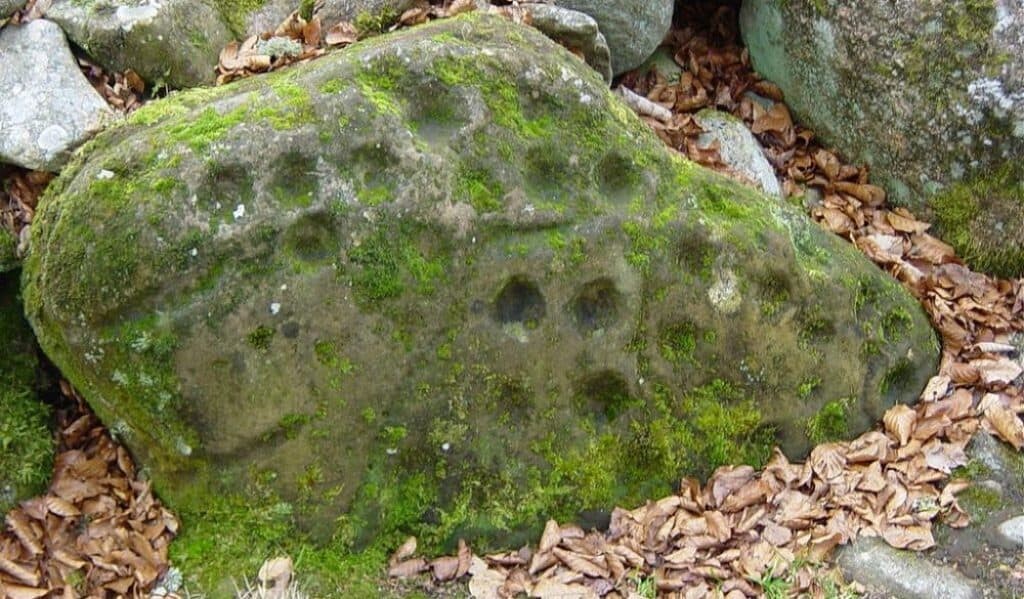Between Cawdor Castle and the infamous battlefield of Culloden, there is a nest of three puzzling objects known as the Clava Cairns, also called the Balnuaran of Clava. Scientific research has unearthed little about the origin of the structures, leaving them as tantalizing monuments to the mysterious life of Scotland’s early inhabitants.

Features of the Clava Cairns
The site primarily consists of what appear to be three circular piles of rocks approximately 50 feet in diameter, encircled by standing stones.
Two of the three cairns are termed “passage cairns” and are round hills of stones stacked to a maximum height of ten feet, with a narrow corridor leading to the center.
Passage Cairn

Between the passage cairns is a “ring cairn”, which is similar in construction to the other two but does not contain any entryway into the structure other than climbing over the stone walls themselves.
Related: Newgrange: The Ancient Winter Soltice Temple in Ireland
Ring Cairn

Strange Cupped Stone
One puzzling but common detail of the cairns is the presence of what are known as “cup marks”. These are circular indentations that were purposely chiseled into the surface of many of the stones. Just as with the cairns themselves, scholars are still debating the purpose of these round carvings. It is not possible to tell if the cup marks were made in the stones at the time of the building of the cairns. The builders may have used boulders that had previously been carved by an even earlier civilization.
Cup Marks Cairn

Theories on Purposes of the Site
All three of the cairns are made of rocks with a reddish hue. However, the significance of this stone choice is no longer known. Another interesting feature of the ring cairn is the placement of three lines of stones stretching from that cairn to adjoining standing stones. These offshoots are slightly raised and their purpose or symbolism is also unknown.
Human Burials or Festivals
The riddle of what the cairns were used for has yet to be solved. They could have been used as cemeteries or for religious festivals. Unfortunately, excavations of the area give scant clues. Digs in 1828 and 1858 did uncover some human bones and evidence of cremations, however few. Not enough bodies exist to be a cemetary for a village, not even a small one. However, some scholars were still reluctant to give up the burial ground theory. They postulated that the structures were not used for burying the common people. They were reserved for just a few individuals who, for some reason, were deemed especially worthy. Other archeologists have stated that the reason for the minimal amount of bones could be due to the human remains being those of a limited number of human sacrifices.
That 1828 excavation also found late Bronze Age pottery shards.
The scholars generally agree that the cairns were constructed sometime between 2000 and 1500 BCE.
Winter Solstice Sun Alignment
As with other mysterious man-made landmarks such as Stonehenge and the Pyramids of Egypt, some experts have suggested that the cairns were used for astronomical purposes. For example, it appears the Clava Cairn site may have been a central point from which to map the stars. Additionally, a research team recently discovered that the sun lit up the passage openings at sunset on the winter solstice. These three Clava cairns belong to a system of about 50 cairns in the Inverness-Nairn Valley that are patterned in alignment with the planets.
The Clava cairns remain one of the finest examples of prehistoric structures. Thus, they have become the standard for categorization of similar structures. More than 30 cairns found along the Rivers Enrick, Beauly, and Spey are also known as “Clava cairns” because of their similarity to these original three structures, all of which mystify scholars and amateur enthusiasts to this day.
References:
Wikipedia, pulled 1/19/17
Ancient History Encyclopedia, pulled 1/19/17